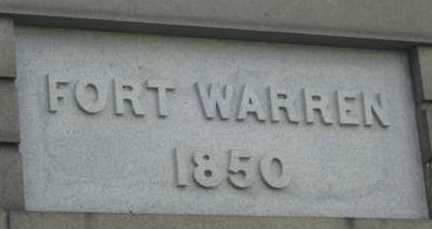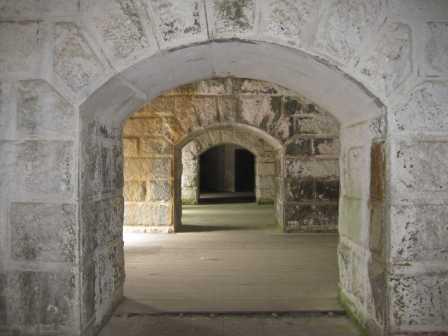By Anna J. Cook
On Wednesday, March 16, short-term fellow Brian Gratton presented the preliminary results of his research here at the MHS, working with the papers of Massachusetts politician Henry Cabot Lodge (1850-1924). Dr. Gratton is a Professor of history at Arizona State University, specializing in the history of immigration and ethnicity in the United States, Latin America, and Europe. His work at the MHS explores Lodge’s role within the Republican party in late-nineteenth and early-twentieth century debates about race and immigration restriction.
Dr. Gratton used the formal portion of his talk to describe how the rhetoric of immigration restriction in Lodge’s political and personal writing (and speaking) shifted between the late-1880s and the mid-1890s from a near-total silence on the question of race, which Gratton describes as “not eerie — scary! … [an] almost pure form of political correctness,” to an argument for immigration restriction that relies on “good” and “bad” immigrants based on race and ethnicity.
During the late 1880s, Lodge relied on a primarily economic rationale for immigration restriction, attempting to persuade working-class constituents in Massachusetts that immigration restriction, like tariffs on imported goods, protected their jobs and their wages. Among working class voters, even those who had themselves immigrated or were the children of immigrants, the economic justification for immigration restriction had some limited success. However, the economic frame became problematic because it offered politicians, and their supporters, no way to differentiate between “good” and “bad” immigrants, and ultimately lost them support of those who feared their own ethnic communities would be targeted for restriction. In the early 1890s, the language shifted subtly to distinguish between groups of immigrants understood to be part of the “founding” or “native” American ethic groups – Anglo-Saxon groups that, with some fancy footwork was amended to include Irish-Americans – and groups of immigrants deemed suspect. The suspect groups, during this period, would have included Italians, Poles, European Jews, Eastern Europeans, and immigrants from Japan and China.
Dr. Gratton suggest that, on a national scale, the frame shifted from economics to race in stages, whereby first target groups were identified based on their willingness to accept lower wages (at least on its face an economic rationalization), and then gradually the discussion shifted to emphasize the group’s citizenship potential (or lack thereof) and questions of character. Literacy tests proved a useful way of implementing de facto exclusion by race and ethnicity because the majority of Irish and German immigrants, by the late 1800s, were able to pass the tests, while Southern and Eastern Europeans and Chinese and Japanese immigrants were much less likely to meet the requirements.
Conversation following the presentation focused on the way these shifting discourses concerning race and ethnicity operated within the framework of Massachusetts state politics and on the national stage. Audience members also suggested possible avenues in to discovering the less public version of Lodge’s views on race and ethnicity, perhaps through reading the private writings of family and friends.
If you missed this brown-bag lunch, mark your calendar for April 6, when Dr. Linford Fisher will present “The Land of the Unfree: Africans, Indians, and the Varieties of Slavery and Servitude in Colonial New England.”
 The guests arrived promptly at 6:00 PM for brief introductory remarks in the Dowse Library. The group then explored the building, guided by MHS staff. Anne Bentley, curator of art, lead a tour of the art and artifacts on display throughout the building, including portraits of famous North Enders such as Paul Revere. Elaine Grublin offered an introduction to using the MHS library.
The guests arrived promptly at 6:00 PM for brief introductory remarks in the Dowse Library. The group then explored the building, guided by MHS staff. Anne Bentley, curator of art, lead a tour of the art and artifacts on display throughout the building, including portraits of famous North Enders such as Paul Revere. Elaine Grublin offered an introduction to using the MHS library.

 On Wednesday, 19 October, the Massachusetts Historical Society opened its doors to current and potential
On Wednesday, 19 October, the Massachusetts Historical Society opened its doors to current and potential 
 For those unable to attend, a number of these items were highlighted in Boston Magazine in 2009 and
For those unable to attend, a number of these items were highlighted in Boston Magazine in 2009 and  Whenever possible, education programs at MHS provide educators with opportunities to explore landscapes related to the Society’s documents and artifacts. We were fortunate to take several field trips this summer to locales in Boston and beyond. Participants in our Thomas Hutchinson workshop spent a beautiful summer day exploring the
Whenever possible, education programs at MHS provide educators with opportunities to explore landscapes related to the Society’s documents and artifacts. We were fortunate to take several field trips this summer to locales in Boston and beyond. Participants in our Thomas Hutchinson workshop spent a beautiful summer day exploring the  Our Constitution workshop participants were able to discuss the ratification process in the elegant surroundings of Boston’s John Adams Courthouse, home of the Supreme Judicial Court of Massachusetts. (Pictured on right.) Of course, not all of our excursions were land-based. In early August, twenty teachers from the Boston area participated in a workshop at Fort Warren on Georges Island, part of
Our Constitution workshop participants were able to discuss the ratification process in the elegant surroundings of Boston’s John Adams Courthouse, home of the Supreme Judicial Court of Massachusetts. (Pictured on right.) Of course, not all of our excursions were land-based. In early August, twenty teachers from the Boston area participated in a workshop at Fort Warren on Georges Island, part of 
